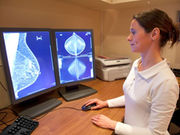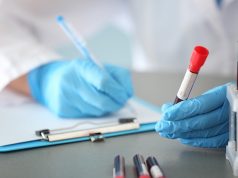False-positive recall rate similar; findings in women with mammography-negative dense breasts
WEDNESDAY, March 9, 2016 (HealthDay News) — For women with mammography-negative dense breasts, ultrasound has better incremental breast cancer (BC) detection than tomosynthesis, according to a study published online March 9 in the Journal of Clinical Oncology. The findings were also presented at the European Breast Cancer Conference, held from March 9 to 11 in Amsterdam.
Alberto S. Tagliafico, M.D., from the University of Genoa in Italy, and colleagues conducted a trial of adjunct screening to compare incremental BC detection by tomosynthesis and ultrasound. Data were included for 3,231 mammography-negative screening participants (median age, 51 years) with dense breasts who had tomosynthesis and physician-performed ultrasound with independent interpretation of adjunct imaging.
The researchers found that 24 additional BCs were detected among participants: 13 tomosynthesis-detected BCs (incremental cancer detection rate [CDR], 4.0 per 1,000 screens) and 23 ultrasound-detected BCs (incremental CDR, 7.1 per 1,000 screens) (P = 0.006). Incremental false-positive (FP) recall occurred in 3.33 percent of participants, with no difference between FP recall (any testing) for tomosynthesis and ultrasound groups (P = 0.26). FP recall (biopsy) also did not differ between the groups (P = 0.86).
“Adjunct ultrasound has significantly better incremental BC detection than tomosynthesis in women with dense breasts and negative two-dimensional mammography screening,” the authors write. “Nonetheless, tomosynthesis detected approximately 50 percent of the additional BCs detected in these women at adjunct screening.”
Several authors disclosed financial ties to the pharmaceutical and biotechnology industries.
Copyright © 2016 HealthDay. All rights reserved.








